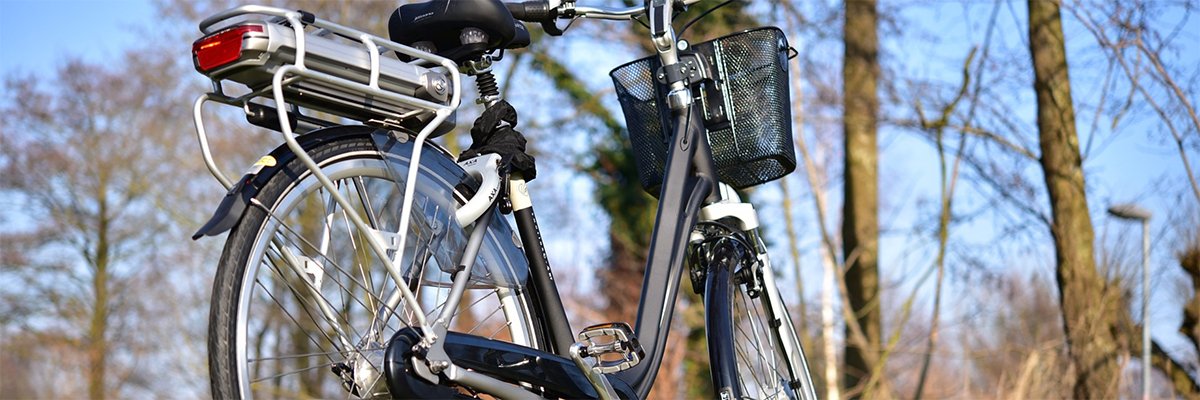How to Safely Transport E-bikes on Transit Buses
Over the past last year, bicycle sales exploded with the pandemic spurring an unprecedented demand for outdoor recreation and alternative forms of transportation compatible with social distancing. Seemingly overnight, E-bikes became an essential form of transportation for many people in North America. Market research firm NDP Group reports North American sales of E-bikes grew 145% in 2020. As 2021 has progressed, sales trends have continued suggesting that E-bikes are likely more than a pandemic trend and are here to stay. With E-bikes offering an efficient and environmentally friendly “last mile”, how do transit authorities ensure they can support this new trend with existing services and leverage this opportunity to increase ridership?
The increase in bicycle commuting has impacted the transit industry in many positive ways, including the growth of transit networks that connect with bike-share programs. Many agencies now equip riders with transit apps to help plan multi-modal routes that incorporate transit and bike-share. However, due to the massive increase in private E-bike sales, transit agencies are faced with another opportunity to adapt — the growing demand to transport E-bikes on public transit vehicles.
While every transit authority will develop its own localized strategy and policy regarding E-bikes, Sportworks bicycle racks are optimized to support a variety of bicycles. Here are the factors that you need to know to ensure the safe transportation of E-bikes:
Bicycle Weight: E-bikes are often heavier than their non-electric counterparts. Apex racks support up to 75 lbs per position, supporting a wide range of bicycles.
Tire Width: Many E-bikes have wider tires, therefore the rack must be able to accommodate the additional width. Sportwork’s Apex racks can be equipped with standard trays to accommodate tire widths up to 3.25"; and fat tire trays to support tire widths up to 5.5”. By comparison, standard racks, (including Sportwork’s DL2 and Trilogy racks) accommodate bicycle tire widths up to 2.3".
Wheelbase: Longer wheelbases are another characteristic of E-bikes that require consideration. Apex racks support wheelbases up to 48" with DL2 and Trilogy models accommodating wheelbases up to 44".
Flexibility: Apex racks can easily be retrofitted with the fat tire trays to accommodate E-bikes and can be customized to fit the needs of your riders – Apex 3 racks can accommodate one, two or three fat tire trays. Fat tire trays are perfectly suitable for standard bicycles as well, for full flexibility.
Protecting Rider’s Investments: Sportworks racks are designed and manufactured by cyclists and bicycle enthusiasts who prioritize damage-free transport. The unique configuration developed by Sportworks prevents bicycle-to-bicycle entanglement and allows for easy loading and removal. Riders will be confident that their E-bike investment is safe and secure — and route delays caused by bicycle securement and removal will be minimized.
As E-bikes continue to grow in popularity, it will be increasingly beneficial for public transit vehicles to support them as a long-term strategy toward increased mobility. Communicating to riders what the capabilities and compatibility of E-bikes on-board is critical to ensuring a safe and efficient ride.
Here are some additional tips for Transit Authorities to help accommodate the growing E-bike demand:
Publish Agency E-bike Policy: State and publish agency-specific E-bike information in easily found places such as websites, transit hubs, and transit apps.
Provide Bicycle Size and Weight Limitations: Post information regarding bicycle weight, tire width, and wheelbase restrictions for the transit racks utilized on your buses.
Bicycle Parking: Provide safe and secure bicycle parking at transit hubs such as bicycle lockers or access-controlled bicycle rooms equipped with outlets to provide E-bike charging options. Many E-bikes are more expensive than traditional bicycles and E-bikes utilize valuable lithium batteries, which are prone to theft.
Tips For Transit Riders With E-bikes:
Check With Your Local Transit Agency: The E-bike policy is set by local transit agencies. While many models of Sportworks racks can accommodate E-bikes, not all transit agencies are equipped or allow E-bikes to be transported on their vehicles.
Know The Size and Weight of Your E-bike: All bicycle racks on buses have bicycle weight and size limitations. The bicycle size and weight limitations for Sportworks racks is listed above, make sure your bicycle is compatible with the bicycle racks utilized by your transit agency.
Remove The Battery: E-bike batteries can be heavy. Removing the battery from your bicycle prior to loading will help reduce the weight of your E-bike.
Remove Any Personal Items: We recommend removing items like panniers, water bottles, or anything that could loosen and bounce off during transport.
Know Which Type of Bicycle Racks Your Transit Agency Uses: Some agencies utilize a variety of racks on their buses. Please verify which models of bike racks are utilized on the buses you plan on riding. All Sportworks racks can be found here for reference: Sportworks Transit Racks.
Looking for more information or have questions?

